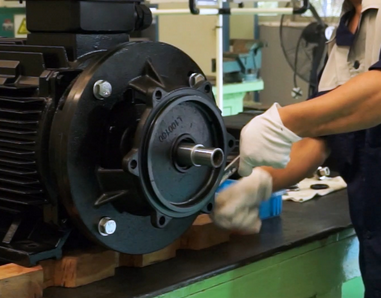Eight "taboos" in using water pumps
There are many taboos in the use of water pumps.
1. No leakage protector installed: Submersible pumps are more likely to leak in water, resulting in power loss and even electric shock accidents. If a leakage protector is installed, the leakage protector will cut off the power supply of the submersible pump as long as the leakage value of the submersible pump exceeds the action current value of the leakage protector.
2. No grounding: The use of protective grounding for submersible pumps is required by my country's mandatory standards. Only by using protective grounding can personal safety during use be guaranteed. If there is no protective grounding, once the shell leaks, the water at the outlet of the submersible pump and the surface of the water being pumped will be electrified, which will endanger personal safety and waste a lot of electricity. If the metal shell of the submersible pump is grounded to a grounding body that meets national standards, when the submersible pump shell leaks, the current passes through the metal shell of the submersible pump and the protective grounding wire, the grounding body, the earth and the working grounding wire of the transformer to form a closed loop with the power supply. When the leakage current is too large, especially when the live wire touches the shell, the protection device of the submersible pump can be activated, which can cut off the power supply of the leakage submersible pump.
3. The motor runs in the opposite direction: There are many types of circulating water pumps that can discharge water in forward or reverse rotation, but the water output will be very small or the current will be large when reversing. If the reversal time is too long, the motor winding will be damaged. Before the submersible pump is put into water, the power supply should be connected to check whether the rotation direction is correct. If the impeller of the submersible pump reverses, it should be stopped immediately and the wiring of any two phases of the three-phase core wires in the cable will be replaced.
4. Start the machine when the power supply voltage is abnormal: Too high or too low voltage will increase the temperature of the water pump, shorten the service life and even burn the water pump. Because the low-voltage power supply line is very long, it is common for the voltage at the end of the line to be too low. During the use of the water pump, the operator needs to check the voltage value of the power supply at any time. If it is less than 10% of the power supply, more than 10% higher than the rated voltage, or greater than 20% of the rated current of the water pump, it should be stopped immediately to prevent abnormal power supply voltage from starting.

5. Frequent switching: The water pump cannot be started too frequently. When the water pump stops, there will be backflow. If it is started immediately, the motor load will start, resulting in too much starting current. After shutdown, you need to wait until the water in the pipe flows back before you can restart, which usually takes about 5 seconds.
6. Long-term overload operation: In order to prevent the water pump from overloading for a long time, do not use a low-lift pump for high-lift work, do not pump sewage with a large amount of sand, and always check whether the current value is within the specified range. If the current is too large, you should shut down for inspection. The water pump uses water as a cooling source, and the dehydration time of the water pump should not be too long.
7. Leave it in the water for a long time after being shut down: If the submersible pump cannot be used continuously after going down the well, it will rust over time and cannot be started. Remember not to leave the submersible pump in the water without asking, it should be turned on once a week, and the running time should be within 5 to 10 seconds. If it is not used for a long time, the energy-saving water pump company recommends that you do not soak it in water for a long time. It should be placed in clean water and powered on for a few minutes. The mud inside and outside the pump should be cleaned and then taken out of the water to dry. A major inspection is required. All parts should be disassembled and checked. The pump should be scrubbed to remove dirt and then the wearing parts should be replaced. After reassembly, it should be painted to prevent rust and then placed in a dry place and a warehouse without corrosive gas.
8. Use in silt environment: If the submersible pump sinks into the water during use, it will cause poor heat dissipation and burn out the motor winding. Water pumps are usually not used in silt environment. In order to prevent the submersible pump from sinking into the silt, the silt in the working environment should be removed before the submersible pump is put into the water. If conditions permit, the submersible pump can also be covered with a fence cover to prevent waste from entering the fence and causing the motor to heat up and the water to flow out poorly.




